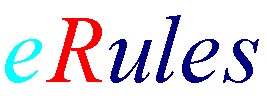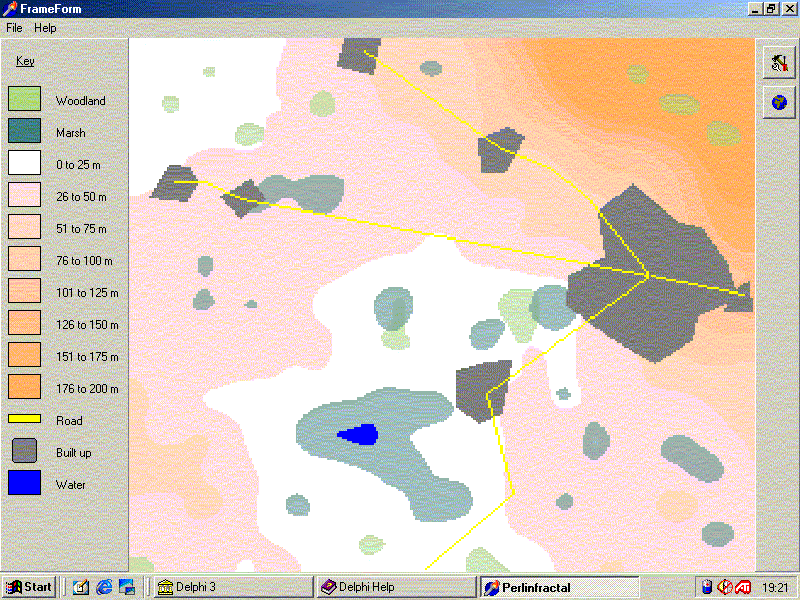|
|
||||||||||||
 |
||||||||||||
 |
||||||||||||
 |
|||
|
Table-Top Map Maker 1.0 Problem: You need to design terrain layout in order to play a wargame on your table with model soldiers. You want the layout not to favour either player. You want it to be different from layouts you have used before. You want it to include built-up areas, woods, hills and valleys, roads, marshlands and lakes, rivers and coastlines. You want the layout to look like real landscapes. Perhaps you want it to resemble a particular area of the world such as the Normandy bocage, the jungles of Burma or the desert of North Africa. Solutions: 1) Buy a good book of wargame scenarios containing maps. 2) Take it in turns to place terrain modules on the table and dice for table ends. 3) Ask your friendly umpire to make up the terrain. 4) Use Table-Top Map Maker 1.0, which shows you a map like the one below. |
|||
 |
|
How does it work? Table-Top Map Maker (TTMM) uses 'fractals' to generate random height data across the map grid. The user can adjust the way this is done in order to vary the shape of the terrain generated. The height variation can be set between 0 and 250 metres. The roughness of the terrain is another key parameter. Also, the shape of valleys can be varied between extremely V-shaped (sharp valleys, broad hills) and extremely U-shaped (broad valleys, sharp peaks). Woodlands are also created with fractals. The proportion of forest cover can be adjusted between 0 and 100%. Distribution of wooded areas can be in larger or smaller blocks. Marsh areas and lakes are created by simulating the drainage of rain down the slopes. Water ends up either in natural basins or falling off the edge of the map. The extent of standing water depends partly on the landscape and partly on the level of rainfall. Built-up areas are created by randomly distributing settlements in order to make up a desired level of population density. The model is based on the Zipf inverse population-rank relationship calibrated on urban settlements in England. Population density is variable in TTMM, so you can get anything between a wilderness and a total city-scape. Roads are generated using an economic model that determines whether it is worth building a road between any two settlements and if so what is the most economical route. Roads therefore realistically avoid steep slopes and water, and tend to be more numerous around larger towns. The number of independently controlled randomized elements in TTMM means that the number of possible maps is practically infinite. However, it will also be possible to index map parameters so that particular maps can be regenerated. TTMM will have a control panel for setting the required parameters and a number of pre-sets for particular areas of the world. It will enable randomly generated maps to be saved as bitmap images so that users can add details manually using graphics software.
Future Developments. TTMM can do everything described above, but still needs further work to incorporate particular features such as rivers and coastlines. Coastlines should be relatively simple, but rivers seem to be a thorny problem. This is basically because the path of a river is inextricably linked to the shape of the landscape that it passes through. We'll keep working on this, but we might release an early version of TTMM without this feature: we think wargamers and others with an interest in random terrain generation will find it useful as it is. TTMM1.0 will be available to download from this site in the near future. |
| [Home] [WW2] [Modern] [Napoleonic] [Map Maker] [News] [FAQ] [Links] [Downloads] |
|
 |
